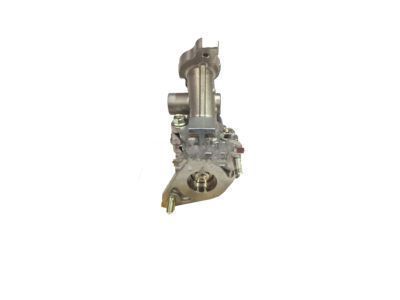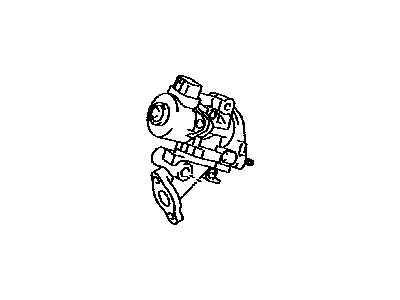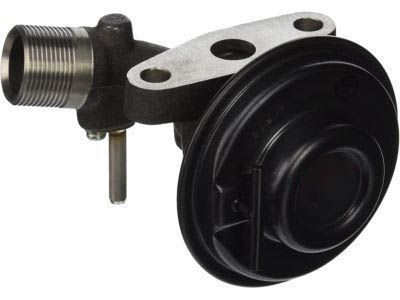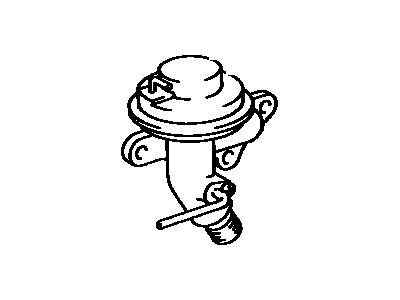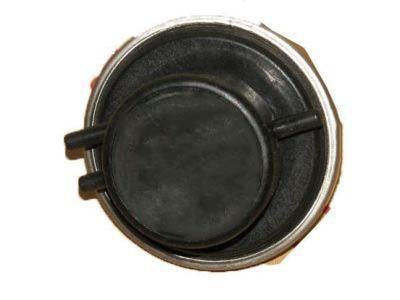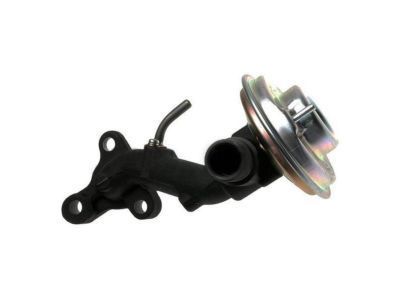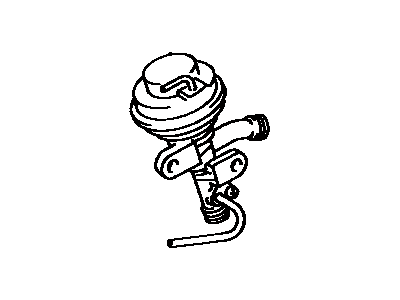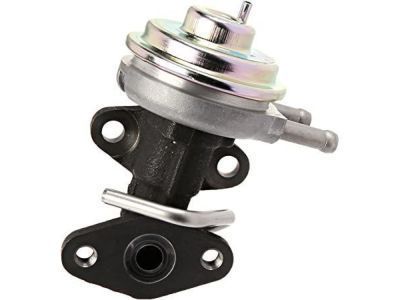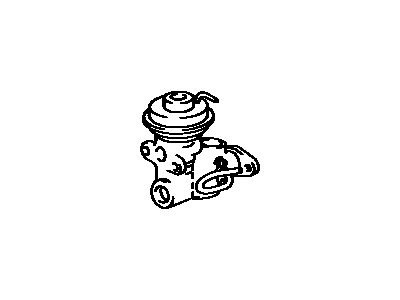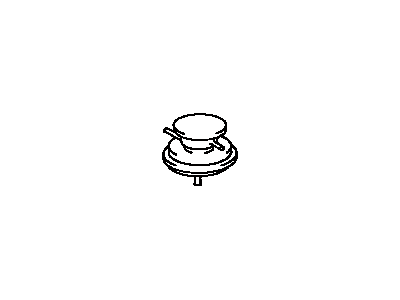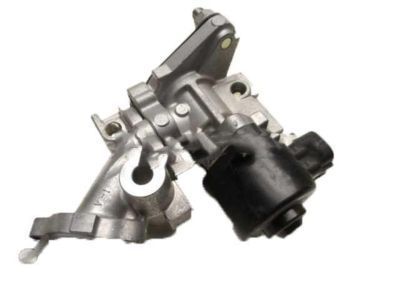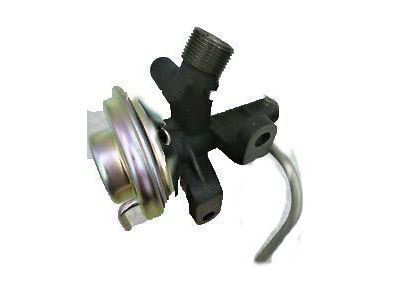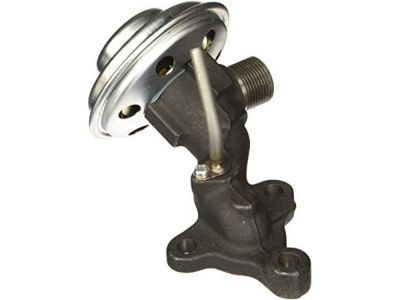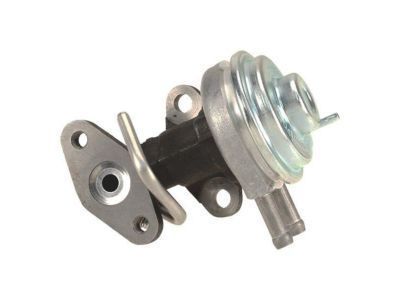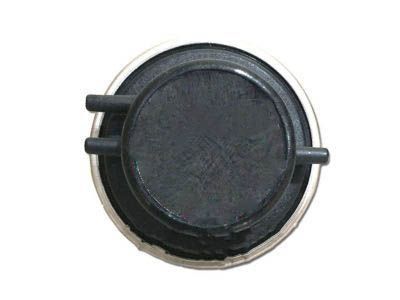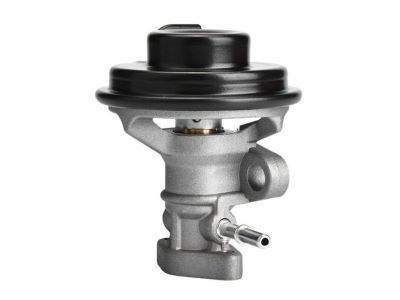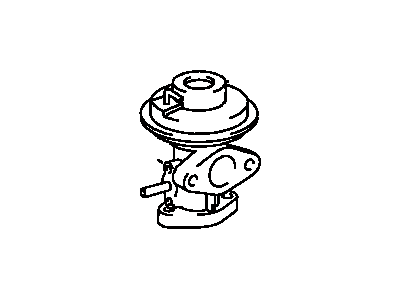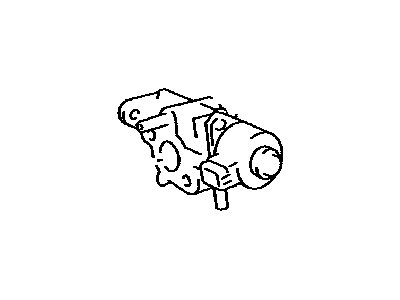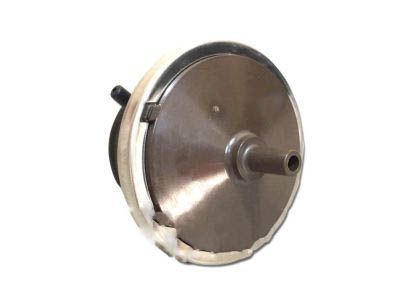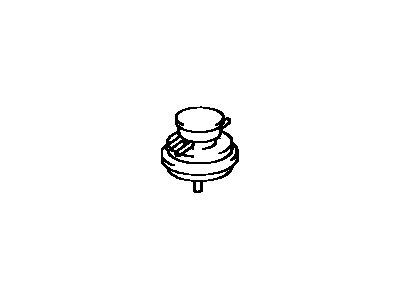

My Garage
My Account
Cart
Genuine Toyota EGR Valve
Emissions EGR Valve- Select Vehicle by Model
- Select Vehicle by VIN
Select Vehicle by Model
orMake
Model
Year
Select Vehicle by VIN
For the most accurate results, select vehicle by your VIN (Vehicle Identification Number).
293 EGR Valves found
Toyota Valve Assembly, EGR W/MO
Part Number: 25620-37120$302.17 MSRP: $433.29You Save: $131.12 (31%)Ships in 1-3 Business DaysProduct Specifications- Other Name: Valve Assy, EGR; EGR Valve
- Replaces: 25620-37110
Toyota Valve Assy, EGR
Part Number: 25620-66011$250.32 MSRP: $358.93You Save: $108.61 (31%)Ships in 1-3 Business DaysProduct Specifications- Other Name: EGR Valve
Toyota Valve Assy, EGR Vacuum Modulator
Part Number: 25870-66010$100.17 MSRP: $141.20You Save: $41.03 (30%)Ships in 1-3 Business DaysProduct Specifications- Replaced by: 25870-66011
Toyota Modulator Assy, EGR Vacuum
Part Number: 25870-74090$90.49 MSRP: $127.56You Save: $37.07 (30%)Ships in 1-2 Business DaysProduct Specifications- Replaces: 25870-74100
Toyota Valve Assembly, EGR
Part Number: 25620-35100$252.64 MSRP: $362.26You Save: $109.62 (31%)Ships in 1-3 Business DaysProduct Specifications- Other Name: Valve Assy, EGR; EGR Valve
Toyota Valve Assy, EGR
Part Number: 25620-75050$252.64 MSRP: $362.26You Save: $109.62 (31%)Ships in 1-3 Business DaysProduct Specifications- Other Name: EGR Valve
Toyota Valve Assy, EGR
Part Number: 25620-66010$252.64 MSRP: $362.26You Save: $109.62 (31%)Ships in 1-3 Business DaysProduct Specifications- Other Name: EGR Valve
Toyota Valve Assy, EGR Vacuum Modulator
Part Number: 25870-75030$100.17 MSRP: $141.20You Save: $41.03 (30%)Ships in 1-3 Business DaysProduct Specifications- Other Name: EGR Modulator, Modulator
Toyota Valve Assembly, EGR W/MO
Part Number: 25620-37110$302.17 MSRP: $433.29You Save: $131.12 (31%)Ships in 1-3 Business DaysProduct Specifications- Other Name: Valve Assy, EGR
- Replaced by: 25620-37120
Toyota Valve Assy, EGR
Part Number: 25620-65011$252.64 MSRP: $362.26You Save: $109.62 (31%)Ships in 1 Business DayProduct Specifications- Other Name: EGR Valve
Toyota Valve Assembly, EGR
Part Number: 25620-35090$252.64 MSRP: $362.26You Save: $109.62 (31%)Ships in 1-3 Business DaysProduct Specifications- Other Name: Valve Assy, EGR; EGR Valve
Toyota Valve Assy, EGR
Part Number: 25620-75030$252.64 MSRP: $362.26You Save: $109.62 (31%)Ships in 1-3 Business DaysProduct Specifications- Other Name: EGR Valve
Toyota Valve Assy, EGR
Part Number: 25620-75040$250.32 MSRP: $358.93You Save: $108.61 (31%)Ships in 1-2 Business DaysProduct Specifications- Other Name: EGR Valve
Toyota Valve Assy, EGR Vacuum Modulator
Part Number: 25870-75040$100.17 MSRP: $141.20You Save: $41.03 (30%)Ships in 1-2 Business DaysProduct Specifications- Other Name: EGR Modulator, Modulator
Toyota Valve Assembly, EGR
Part Number: 25620-35130$250.32 MSRP: $358.93You Save: $108.61 (31%)Ships in 1 Business DayProduct Specifications- Other Name: Valve Assy, EGR; EGR Valve
- Manufacturer Note: CARIFORNIA SPEC
Toyota Valve Assy, EGR
Part Number: 25620-74330$250.32 MSRP: $358.93You Save: $108.61 (31%)Ships in 1-3 Business DaysProduct Specifications- Other Name: EGR Valve
Toyota Valve Assembly, EGR W/MO
Part Number: 25620-31070$336.97 MSRP: $483.19You Save: $146.22 (31%)Ships in 1-3 Business DaysProduct Specifications- Other Name: Valve Assy, EGR; EGR Valve
Toyota Valve Assembly, EGR W/MO
Part Number: 25620-F2010$304.60 MSRP: $436.78You Save: $132.18 (31%)Ships in 1-3 Business DaysProduct Specifications- Other Name: EGR Valve
- Replaces: 25620-24050
Toyota Valve Assembly, EGR W/MO
Part Number: 25620-36060$304.60 MSRP: $436.78You Save: $132.18 (31%)Ships in 1 Business DayProduct Specifications- Other Name: Valve Assy, EGR; EGR Valve
- Replaces: 25620-36030
Toyota Valve Assy, EGR Vacuum Modulator
Part Number: 25870-65010$72.56 MSRP: $102.28You Save: $29.72 (30%)Product Specifications- Other Name: Modulator, Vacuum Modulator
| Page 1 of 15 |Next >
1-20 of 293 Results
About Toyota EGR Valve
Your Toyota EGR (exhaust gas recirculation) valve is intended to allow exhaust gases into the intake manifold of your vehicle, in computer regulated amounts. An increase of vehicle speed and engine temperature will result in the EGR valve opening up. Once you slow or come to a stop, the valve will close to stop flow of gases. Most EGR valves are commonly composed of steel and copper. The valve will be found close to the intake manifold on your engine. Over time, the exhaust gases passing through the valve will cause an ever growing layer of soot and grime.
Excessive layers of these contaminants can result in complete valve failure, or it being stuck completely open or closed. In order to change the EGR valve, locate the valve near your intake manifold, remove the mounting bolts and replace with the new one. You may experience detonation if your EGR valve is clogged, or engine misfire if it is stuck open which causes too much exhaust to enter your intake manifold air/fuel mixture. Replacing a failing or broken EGR valve will restore proper emission of your exhaust gasses. A world without functioning EGR valves in cars would be one with a highly polluted environment!
Since there is a high-quality genuine OEM part with a huge discounted price for your Toyota, why do you insist buying aftermarket parts? There is no reason for that at all. You will never regret purchasing genuine parts here. The price showing on the website is up to 33% off MSPR, and it is cheaper than your expectation. If it still cannot convince you, we have a dedicated and patient customer service team ready to assist you, and we check live part availability for you and making sure you are buying the correct one.
Excessive layers of these contaminants can result in complete valve failure, or it being stuck completely open or closed. In order to change the EGR valve, locate the valve near your intake manifold, remove the mounting bolts and replace with the new one. You may experience detonation if your EGR valve is clogged, or engine misfire if it is stuck open which causes too much exhaust to enter your intake manifold air/fuel mixture. Replacing a failing or broken EGR valve will restore proper emission of your exhaust gasses. A world without functioning EGR valves in cars would be one with a highly polluted environment!
Since there is a high-quality genuine OEM part with a huge discounted price for your Toyota, why do you insist buying aftermarket parts? There is no reason for that at all. You will never regret purchasing genuine parts here. The price showing on the website is up to 33% off MSPR, and it is cheaper than your expectation. If it still cannot convince you, we have a dedicated and patient customer service team ready to assist you, and we check live part availability for you and making sure you are buying the correct one.
Toyota EGR Valve Parts Questions & Experts Answers
- Q: How Does the EGR System Reduce NOx Emissions and how to Inspect and Replace the EGR Valve on Toyota Land Cruiser?A:To adjust NOX emissions, some of the exhaust gases are directed into the intake manifold through the EGA valve decreasing the maximum combustion temperature with EGA valve being the main unit of the system. It coexists with such devices as EGA vacuum modulator, Bi-metal Vacuum Switching Valve, Vacuum Switching Valve as well as Vacuum Transmitting Valve, however not all of these are incorporated in every product models. When the engine temperature is low, the VSV or BVSV and the EGA valves are closed which consequently block the exhaust gas recirculation. It is stated that in proportion to the increase in the engine temperature, the VSV or BVSV opens whereas when the throttle valve is sufficiently opened to expose the EGA port and when the pressure in the EGA valve is low, it leads to pressure build up which closes the modulator and opens the EGA valve. This cycle goes on depending on the coolant temperature, the exhaust gas pressure, the fuel flow pressure and the position of the ignition switch. If the engine bogs down at idle, hesitates on acceleration, accelerates poorly, or gets poor fuel economy it could mean the EGA system is not turning off. Look at all vacuum connections for the proper connection and integrity and replace any cracks or damaged hose to the EGR valve. Also, clean the EGR vacuum modulator filter to determine if it is clogged or damaged, and if this is the case, clean it with compressed air. If the vacuum hose is disconnected from the EGR valve and a vacuum pump connected to it, then the application of vacuum should make the engine to vibrate or stall, normally this is the time to replace the EGR valve. For replacement, the vacuum hose should be disconnected and the valve removed by the removal of the retaining bolts, after this step a new valve should be inserted and secured through the bolts, then hose vacuum should be connected once again.
Related Toyota Parts
Browse by Model
4Runner EGR Valve Avalon EGR Valve Camry EGR Valve Celica EGR Valve Corolla Cross EGR Valve Corolla EGR Valve Corona EGR Valve Cressida EGR Valve Crown EGR Valve Grand Highlander EGR Valve Highlander EGR Valve Land Cruiser EGR Valve MR2 EGR Valve Paseo EGR Valve Pickup EGR Valve Previa EGR Valve Prius AWD-e EGR Valve Prius C EGR Valve Prius EGR Valve Prius Prime EGR Valve Prius V EGR Valve RAV4 EGR Valve RAV4 Prime EGR Valve Sequoia EGR Valve Sienna EGR Valve Solara EGR Valve Starlet EGR Valve Supra EGR Valve T100 EGR Valve Tacoma EGR Valve Tercel EGR Valve Tundra EGR Valve Van EGR Valve Venza EGR Valve
